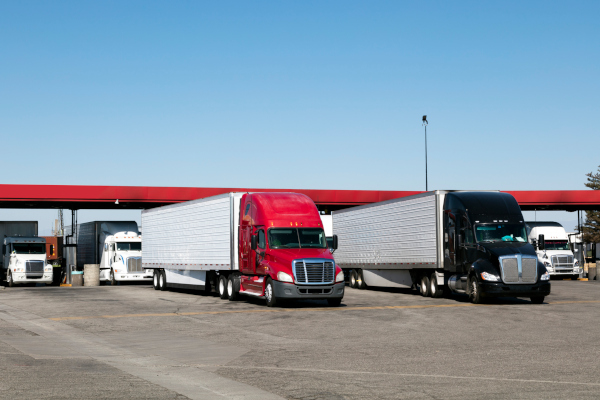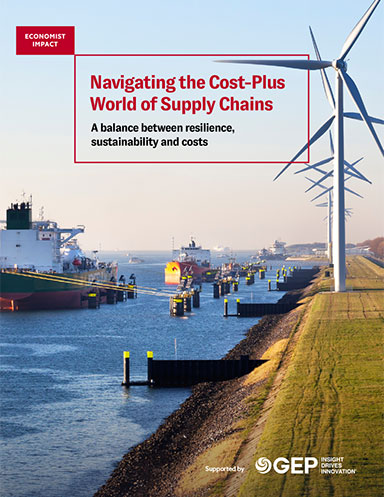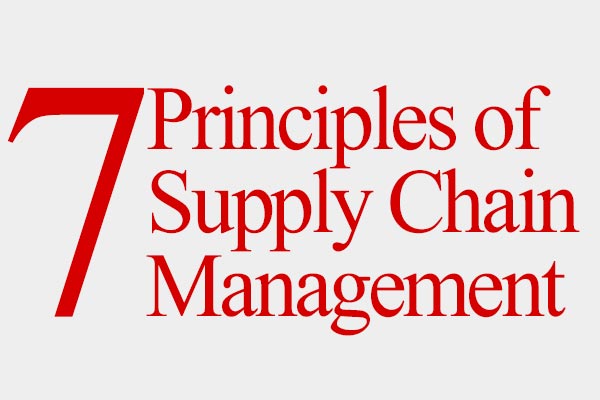CSCMP EGDE Panel Weighs Volatility’s Impact on Operations
Continuing disruptions and labor uncertainty still driving volatility
While there is a fair amount of uncertainty and anxiety in regard to the current state of the freight transportation and logistics markets, the most recent edition of the Council of Supply Chain Management Professionals (CSCMP) State of Logistics (SoL) report observed that the cost of United States business logistics accounted for 9.1% of United States GDP in 2022. That indicates that as GDP headed down, logistics costs saw gains, and it served as a key theme of a session at last week’s CSCMP EDGE conference in Orlando.
The session’s moderator, Kevin Smith, president and CEO of Sustainable Supply Chain Consulting and CSCMP chairman of the board, made the case that some industry volatility in 2023 has been driven by things like the demise of less-than-truckload (LTL) carrier Yellow Corp., the UPS-Teamsters negotiations, which eventually resulted in a new deal, and the United Auto Workers ongoing negotiations with the ‘Big Three” automakers, among other issues.
Pressure from many sides
Paul Bingham, director of transportation consulting for S&P Global Market Intelligence, observed that the 9.1% logistics GDP tally is emblematic of the combination of ongoing and persisting disruptions.
“This is the heavy lift in supply chain but doing that makes things much more cost-effective. The other thing, especially in this environment, is to know your business better than your 3PLs…when they know more than you, you will pay more.”
“There are many things we are still facing, including inflation…and the Federal Reserve trying to fight that inflation,” he said. “Across many different aspects of your operations, from labor to dramatic declines in transportation rates, as well as the recent spike in fuel prices, these are some of the factors affecting overall performance.”
The trio of interest rates, cost of capital, and inventory carrying costs are at the highest levels in years, for many industry stakeholders, he explained.
“That's not going down quickly with the interest rate environment that we face, and that affects decisions on inventory policy and consumer-based and business-based decisions,” he said. “It has also contributed to the freight recession we have this year, and the prospects of getting out of it next year are affected strongly by interest rates and costs of capital across the economy.”
Volatility to remain
From a shipper perspective, Chris Jackson, vice president of operations & IT for Chevron North America, said that he does not expect a quick improvement, with volatility expected to remain intact.
And a way to manage that volatility, he said, is to act as a shipper of choice. While that may sound simple, Jackson said it requires a myriad of tasks including understanding your freight, your freight classes, weights, and dimensional factors.
“This is the heavy lift in supply chain but doing that makes things much more cost-effective,” he said. “The other thing is, especially in this environment, is to know your business better than your 3PLs…when they know more than you, you will pay more. We are also consistently benchmarking them to their ability to help us with our time and costs related to capital strategy. That’s how we’re weathering the storm but we do not expect to see volatility decrease, we expect an increase.”
Contingency planning
Navigating this volatility, for a retail shipper, requires both resilience and strong partner relationships, according to Jennifer Kobus, vice president of transportation & logistics for Ulta Beauty.
“Those are extremely critical,” she said. “We have been dealing with volatility for the last few years, which requires resilience. The name of the game is really around contingency planning, it is absolutely critical. We’ve [learned] that the ability to be resilient and to adapt quickly requires having a great set of plans. That includes having strategic partnerships and collaborative relationships for the carriers you have partnerships with—for things like carrier philosophy and how you look at your partners. You need to have a solid plan and engage with them, not just for an annual RFP.”
While supply chain volatility remains intact, Greg Javor, senior vice president of global supply chain operations for Mattel Inc., said he could see it decreasing to pre-pandemic levels, as rates are nearly at pre-pandemic levels.
Customer inventory shift
“For most modes, you have to do more than once-a-year bidding, and there is always going to be a monkey wrench thrown in like the Yellow situation,” he said. “I think things are going to be pretty steady. There has been a lot of work done on inventory and getting inventories back in line. I think there is still a way to go on that. There has been a shift from the direct import side, where customers were taken overseas and own the inventory, with less customers wanting to take less risk on that. It is going to be based on having inventory in your warehouse and having a good inventory match and being able to execute.”
On the 3PL side, Penske Senior Vice President of Sales and Solutions Andy Moses said that volatility drives close collaboration and serves as a necessary part of great outcomes being developed.
From a market perspective, Moses views the economy as a “sleeping giant” of sorts.
Andy Moses:
“When I look at the underlying costs of transportation, they are not dropping. Rates may have dropped a bit, but costs have not dropped. Equipment, labor, insurance, in particular, and rates might have dropped a bit. Any 4% to 5% increase in activity is going to be felt quickly. I do think there is more volatility coming with any help at all from the economy.”
Article Topics
Penske Logistics News & Resources
PITT OHIO Wins 2023 Penske Logistics Freight Management Carrier Award CSCMP EGDE Panel Weighs Volatility’s Impact on Operations Penske Logistics is taking steps to expand its freight brokerage operations U.S. logistics business costs rise by 22.4% to $1.85 trillion in 2021, new report says U.S. business logistics costs fall 4% in pandemic year of ‘chaos,’ new study finds Penske Logistics announces it plans to acquire Black Horse Carriers Inc. 31st Annual State of Logistics: Resilience put to the test More Penske LogisticsLatest in Transportation
A Look at Baltimore’s Key Bridge Collapse—One Month Later Baltimore Continues Bridge Recovery With Opening of New Channel How Shippers Can Prep for Hurricane Season UPS Struggles in First Quarter With Steep Earnings Decline FedEx Announces Plans to Shut Down Four Facilities The Two Most Important Factors in Last-Mile Delivery Most Companies Unprepared For Supply Chain Emergency More TransportationAbout the Author














